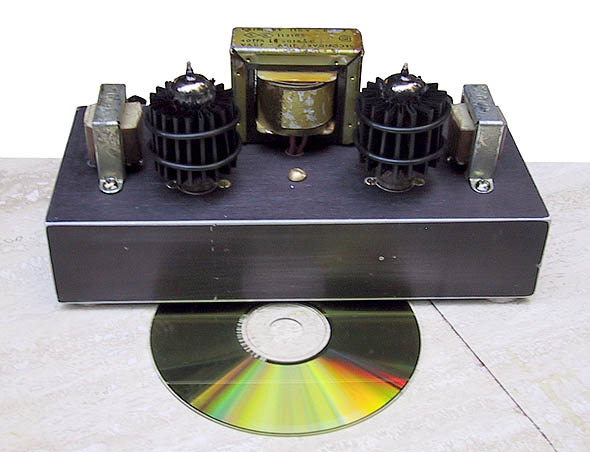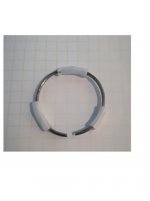Hello All
I came across this while searching for possible improvements in tube.
Tube Damper Comparisons
How exactly do these things work, and why are they then not made by people who make tubes?
Are the electrons shaking the tube so to speak?.
that much?? cant imagine that.
What is it really damping /cushioning??.I can understand only shielding aspect of some of these.
BR
Amit
I came across this while searching for possible improvements in tube.
Tube Damper Comparisons
How exactly do these things work, and why are they then not made by people who make tubes?
Are the electrons shaking the tube so to speak?.
that much?? cant imagine that.
What is it really damping /cushioning??.I can understand only shielding aspect of some of these.
BR
Amit
Dampers affect the glass. Sound is affected by the valve innards. Unclear to me how reducing vibration in the glass reduces vibration in the innards. They are not made by valve makers because valve makers, if worried about vibration, solve this problem by redesigning the innards (e.g. some Special Quality valve).
Sometimes, simple elastomer "O" rings positioned over the micas can help a marginal tube. Both neoprene and silicone rubbers work, with the silicone being a bit more heat resistant.
As for sockets, mica loaded phenolic has vibration damping properties. That's something the folks who make pricey, "audiophile", stuff would prefer you didn't learn about.
As for sockets, mica loaded phenolic has vibration damping properties. That's something the folks who make pricey, "audiophile", stuff would prefer you didn't learn about.
DIY yourself and try it, first.
You need 1mm steel wire and 3 teflon pieces (from teflon coax).
Something like this.
(IMO, teflon socket is much beter idea than tube damper).
Hi. thanks for the input! and thank you all too !
How likely am I to Hear the difference if im using ecc83/81/82 as pre amp in a single ended amp. Is it also possible to hear the difference easily if was to put this ring or similar stuff on an ECL86?
By Marginal or not good tube you mean one which has an internal assembly loose part. If we are damping virbations which i understand is being attempted. ..is the mains tranny on the chassis rocking the floor and everything fixed to it?h
Just asking. .. thanks
BR
amit
Last edited:
all amplifier tubes are microphonic - more or less;
e.g. the control grid is a bunch of wires suspended between two support rods, which are held in place by mica spacers, which connect to the glass bulb;
so when you yell to the glass (or tap it with a screw driver), it will vibrate according to your voice, which will be transferred to the grid via mica and supports;
a vibrating grid will modulate the plate current, and become amplified in following gain stages as if it were a regular signal input and finally become audible in your speaker;
it is not actually necessary that the inards are loose for them to vibrate; a violin string vibrates as well when excited despite it being well fixed on both ends ...
the nasty thing is, if a highly microphonic (1st stage) tube picks up the sound from the speaker and the amp has sufficient gain you could even produce a sustained feedback oscillation - usually a whistle;
if gain is lower than necessary for sustained oscillation the microphony phemomenon may still give rise to frequency dependent distortion because different parts of the tube exhibit different resonant frequencies;
resonances are usually in the kHz range, 100Hz vibration from the transformer is not likely to create problems via microphony;
whether mechanical dampers actually improve anything I have no experience with ...
e.g. the control grid is a bunch of wires suspended between two support rods, which are held in place by mica spacers, which connect to the glass bulb;
so when you yell to the glass (or tap it with a screw driver), it will vibrate according to your voice, which will be transferred to the grid via mica and supports;
a vibrating grid will modulate the plate current, and become amplified in following gain stages as if it were a regular signal input and finally become audible in your speaker;
it is not actually necessary that the inards are loose for them to vibrate; a violin string vibrates as well when excited despite it being well fixed on both ends ...
the nasty thing is, if a highly microphonic (1st stage) tube picks up the sound from the speaker and the amp has sufficient gain you could even produce a sustained feedback oscillation - usually a whistle;
if gain is lower than necessary for sustained oscillation the microphony phemomenon may still give rise to frequency dependent distortion because different parts of the tube exhibit different resonant frequencies;
resonances are usually in the kHz range, 100Hz vibration from the transformer is not likely to create problems via microphony;
whether mechanical dampers actually improve anything I have no experience with ...
These not only damp, but importantly cool the tubes: PEARL TUBE COOLER for 7-pin MINIATURE SMALL-SIGNAL TUBES — TYPE MCF-7 | eBay

dave

dave
snakeoil BS.
buy tube types with hardened construction against microphonics...
Tubes have vacuum inside, therefore they are cooled by infrared radiation only. Not by convection. That´s why, the plates are black.
Putting anything on glass will make it worse.
Heat problem is on inside metal elements, NOT the small heat when you touch the glass..
buy tube types with hardened construction against microphonics...
Tubes have vacuum inside, therefore they are cooled by infrared radiation only. Not by convection. That´s why, the plates are black.
Putting anything on glass will make it worse.
Heat problem is on inside metal elements, NOT the small heat when you touch the glass..
Valve innards are cooled by radiation. Much of that is absorbed by the glass, which then cools by a mixture of radiation and convection. The snag is that glass is a poor conductor of heat, so it is difficult to get good thermal flow from the glass to some external heatsink.
- Status
- This old topic is closed. If you want to reopen this topic, contact a moderator using the "Report Post" button.
- Home
- Amplifiers
- Tubes / Valves
- Tube Dampers
